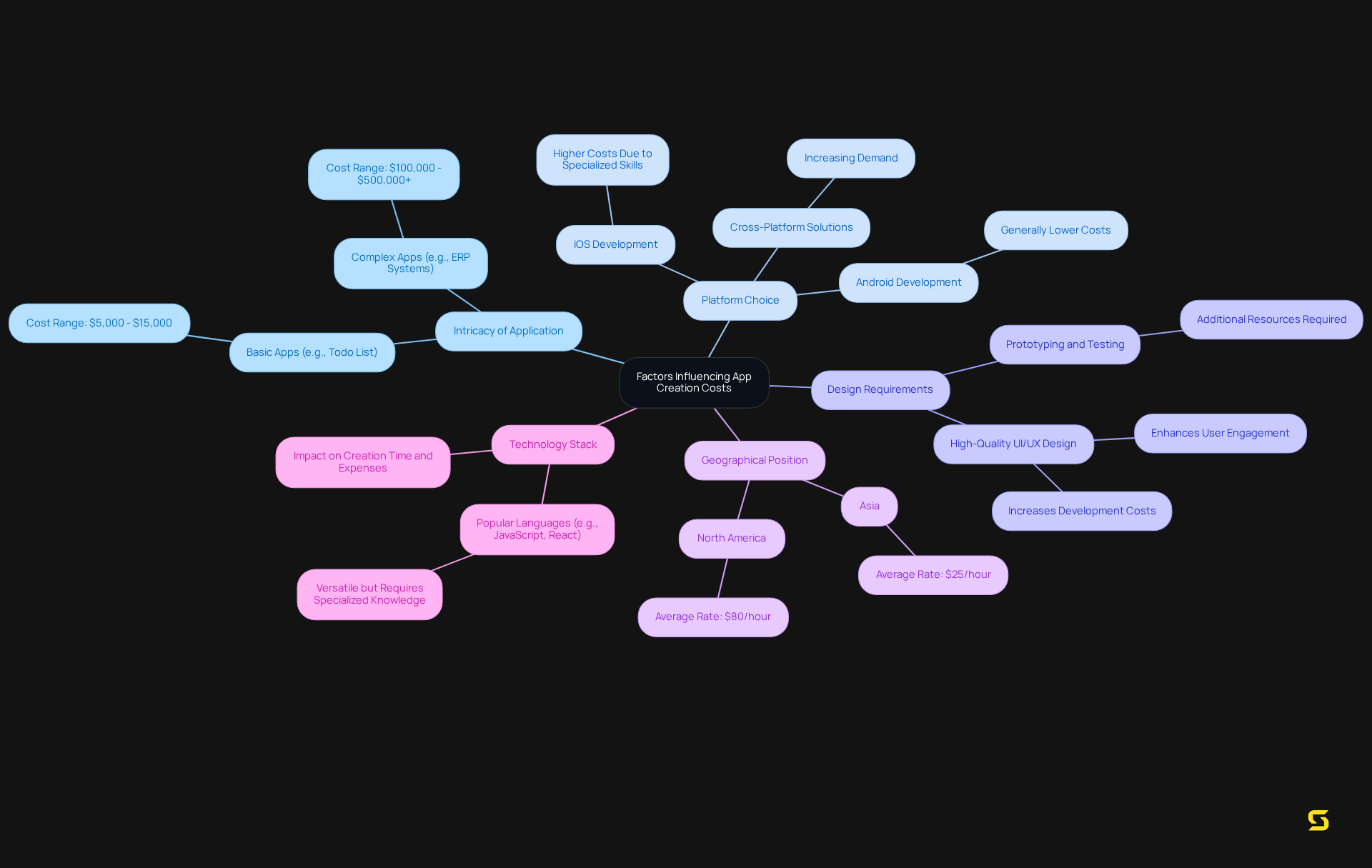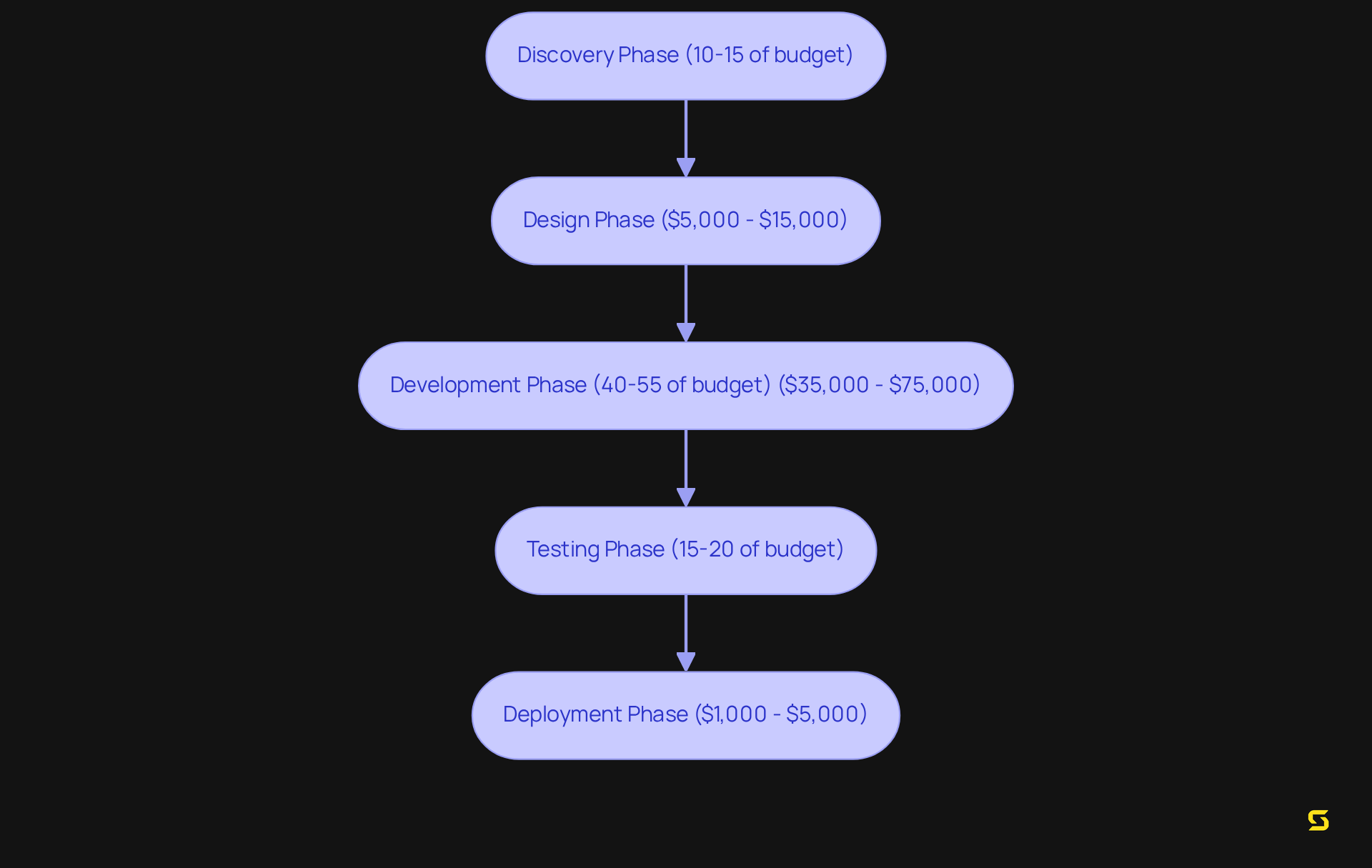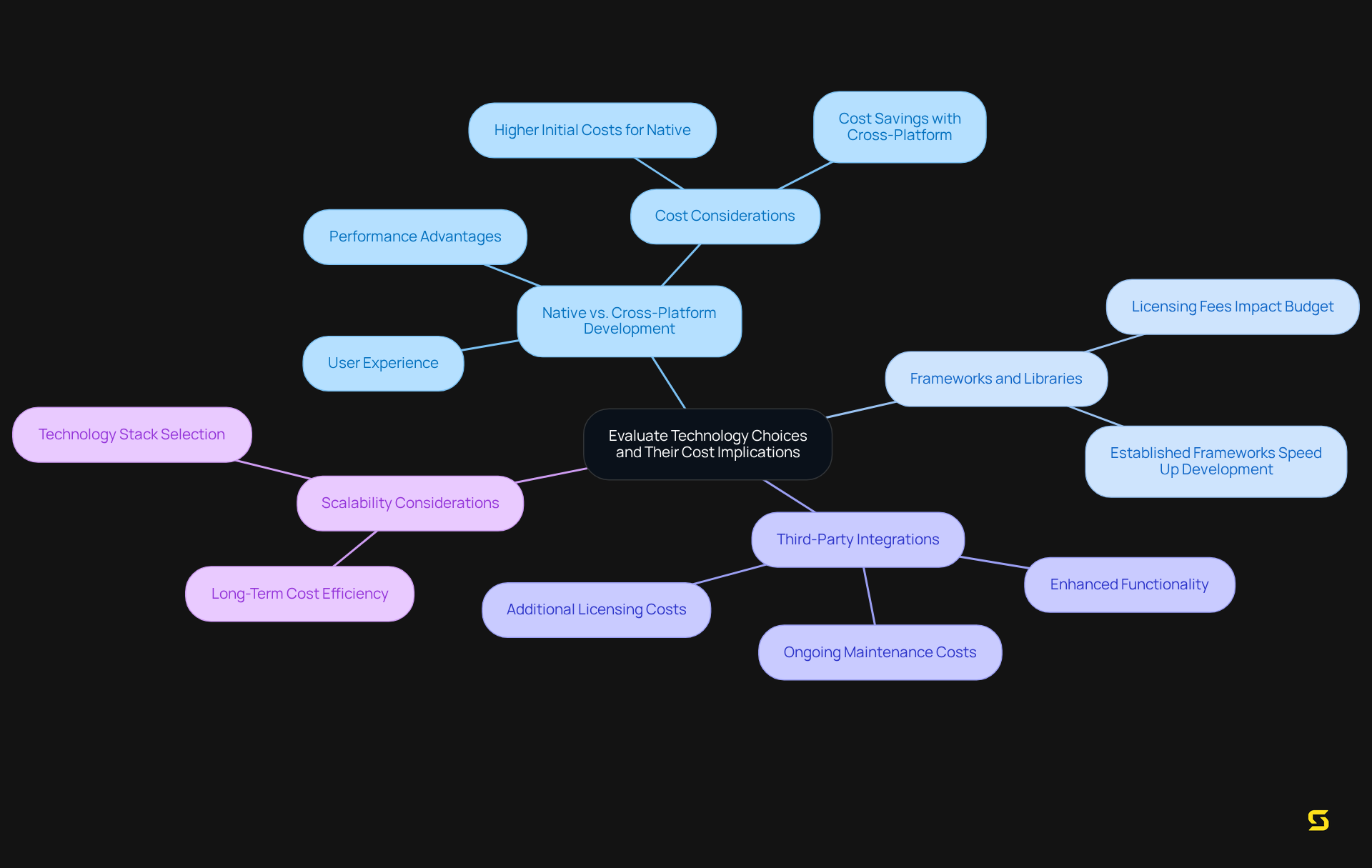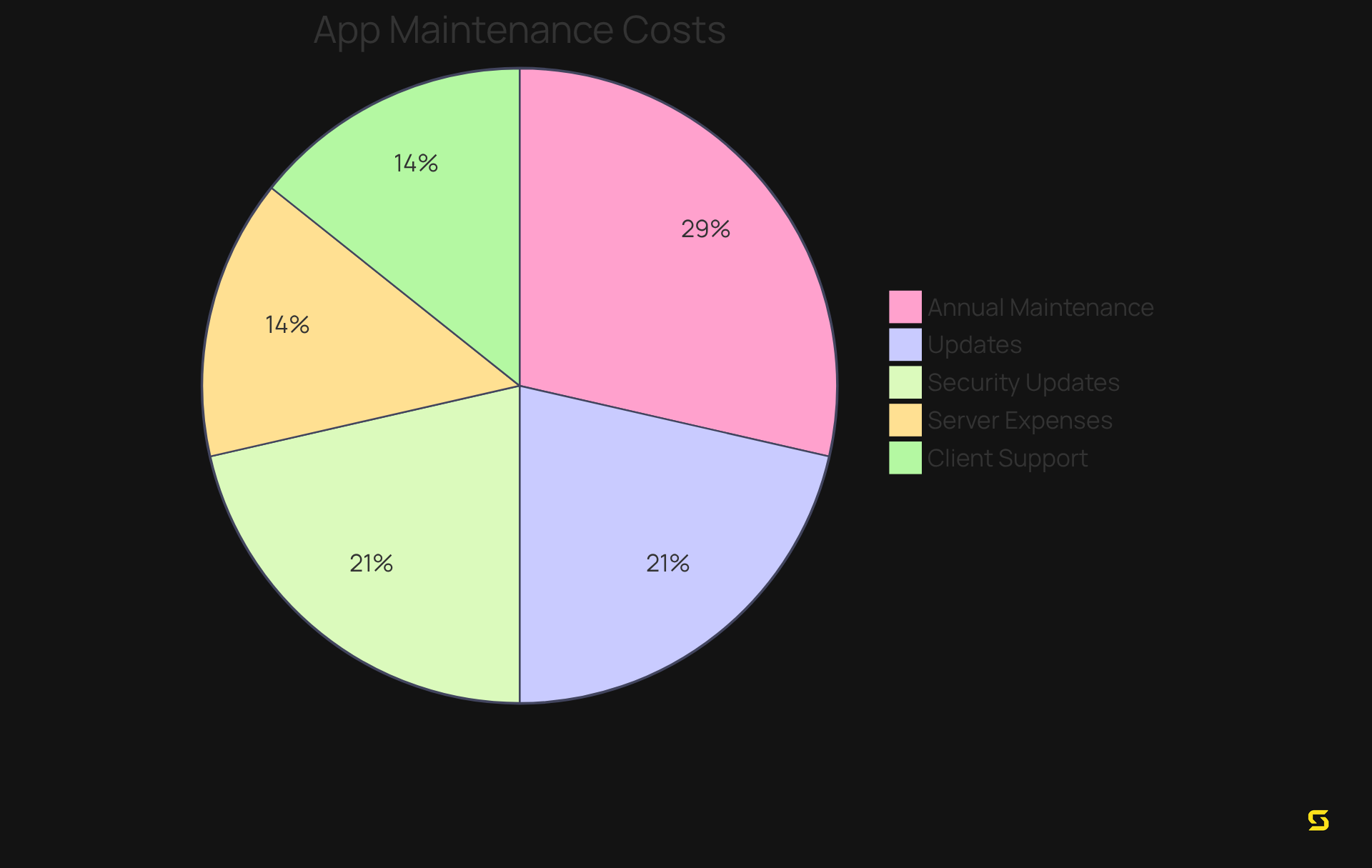Overview
The cost of app creation is significantly influenced by several key factors:
- The complexity of the application
- Platform choice
- Design requirements
- Geographical location of developers
- The technology stack utilized
Understanding these elements is crucial for businesses aiming to align their project objectives with their budgetary constraints. By grasping the implications of these factors, organizations can make informed decisions that effectively manage their budget throughout the app development process.
Introduction
Understanding the financial landscape of app creation is paramount for businesses seeking to navigate the intricate web of development costs. Expenses can fluctuate dramatically based on app complexity, platform choice, and design requirements. Therefore, it is essential for stakeholders to grasp these factors to make informed decisions. As technology progresses and user expectations escalate, the pressing question remains: how can companies effectively balance quality and budget without compromising their app's success?
Explore Key Factors Influencing App Creation Costs
-
The intricacy of an application is a primary factor influencing the app creation cost. Simple applications, such as a basic Todo List app, typically range from $5,000 to $15,000, while more intricate solutions, like an Enterprise Resource Planning (ERP) system, can exceed $500,000. This considerable difference underscores the necessity of outlining the app's scope early in the app creation cost process.
-
Platform Choice: The choice of platform—whether iOS, Android, or both—also impacts costs significantly. iOS development often necessitates specialized skills, which can lead to higher expenses compared to Android development. As the number of mobile individuals continues to grow, with projections indicating that 126 million people will utilize mobile peer-to-peer payments, the demand for cross-platform solutions is increasing.
-
Design requirements show that investing in high-quality UI/UX design is crucial for enhancing user engagement; however, it can significantly increase the app creation cost. A user-focused design strategy not only enhances the overall experience but also requires additional resources for prototyping and testing, which can increase the app creation cost.
-
The geographical position of the group plays a crucial role in determining the app creation cost. For instance, developers in North America may charge around $80 per hour, while those in Asia might start at $25. This variance allows businesses to strategically choose teams based on budget constraints, project requirements, and app creation cost.
-
Technology Stack: The chosen technology stack affects both creation time and expenses. Certain programming languages and frameworks, such as JavaScript and React, are popular for their versatility but may require specialized knowledge, which can lead to a higher app creation cost. As businesses increasingly seek to leverage advanced technologies, understanding the implications of the technology stack becomes essential for controlling app creation costs in effective budgeting.
In summary, grasping these essential elements can assist companies in navigating the intricacies of app creation cost, ensuring they make informed choices that align with their project objectives.

Break Down the App Development Process and Associated Costs
-
Discovery Phase: This initial stage is critical, involving comprehensive market research and requirement analysis, which contributes to the app creation cost, typically accounting for 10-15% of the total budget. Understanding this phase lays the groundwork for a successful project.
-
Design Phase: The UI/UX design phase is essential for user engagement and is a significant factor in the app creation cost, which can range from $5,000 to $15,000, depending on complexity and quality. Investing in high-quality design is vital for user satisfaction.
-
Development Phase: The development phase represents the most substantial expense driver, with app creation cost accounting for 40-55% of the total budget. Expect to budget between $35,000 and $75,000 for the app creation cost related to coding. This investment is crucial, as it directly impacts the functionality and performance of the app.
-
Testing Phase: Quality assurance is essential to manage the app creation cost effectively. This phase can account for approximately 15-20% of the total budget, impacting the app creation cost while ensuring the app is bug-free and meets user expectations. A rigorous testing process safeguards your investment.
-
Deployment Phase: Launching the app incurs additional expenses, including server setup and app store fees, which contribute to the app creation cost, typically ranging from $1,000 to $5,000. Proper planning for this phase ensures a smooth transition to market.

Evaluate Technology Choices and Their Cost Implications
-
Native vs. Cross-Platform Development: Native applications typically deliver superior performance, yet the app creation cost can be significantly higher. In contrast, cross-platform solutions can lower the app creation cost, although they may sacrifice some performance quality.
-
Frameworks and libraries: Leveraging well-established frameworks can expedite the development process and help lower the app creation cost. Nonetheless, the licensing fees associated with proprietary tools can inflate the overall budget.
-
Third-Party Integrations: The integration of APIs and external services can greatly enhance application functionality. However, it is crucial to consider the app creation cost along with the additional costs related to licensing and ongoing maintenance.
-
Scalability considerations are crucial because choosing a technology stack that supports scalability is essential for long-term cost efficiency, ultimately lowering the app creation cost by reducing the need for extensive overhauls in response to increasing user demand.

Assess Long-Term Costs: Maintenance and Updates
-
It is essential to anticipate allocating 15-20% of the app creation cost each year for annual maintenance expenses. For instance, the app creation cost of $100,000 may incur annual maintenance costs ranging from $15,000 to $20,000. More complex mobile applications often lead to an increase in the app creation cost by an additional 20% to 30% in resources for upkeep, which is a critical consideration for SaaS product owners in their budgeting processes.
-
Updates and Feature Enhancements: Regular updates are vital for keeping the app both relevant and secure. It is important to allocate funds for additional expenses related to new features and enhancements. Significant updates can vary from $20,000 to $50,000, while the yearly estimate for platform updates typically falls between $5,000 and $30,000.
-
Server and Hosting Expenses: Ongoing server costs can fluctuate between $500 and $5,000 monthly, depending on traffic and data storage needs. The annual cost estimate for server and backend maintenance generally ranges from $5,000 to $25,000, ensuring optimal performance and reliability.
-
Client Support and Bug Fixes: It is crucial to allocate funds for client support and the resolution of bugs post-launch, as these can significantly impact the overall maintenance budget. Companies should plan to spend between $2,000 and $10,000 annually on client support and feedback, in addition to an average of $1,000 to $5,000 for bug repairs. A systematic approach to managing bug fixes is essential for enhancing client satisfaction and retention, ultimately driving the app's long-term success.
-
Security Updates: Allocating 10% to 15% of the maintenance budget specifically for security updates is advisable to protect user data and ensure compliance with regulations. This proactive investment is crucial for safeguarding the app against evolving cyber threats.

Conclusion
Understanding the intricacies of app creation costs is essential for any business aiming to develop a mobile application. Various factors—including app complexity, platform choice, design requirements, the geographical location of developers, and the technology stack—significantly influence the overall expenses involved in app development. By grasping these elements, businesses can make informed decisions that align with their budget and project objectives.
Key insights discussed throughout the article emphasize the importance of each phase in the app development process—from discovery and design to development, testing, deployment, and maintenance. Each stage carries its own costs and implications, reinforcing the need for meticulous planning and budgeting. Furthermore, the long-term costs associated with maintenance, updates, and security are critical considerations that can impact the overall financial success of the application.
Navigating the complexities of app creation costs requires a strategic approach that encompasses both initial development and ongoing maintenance. By prioritizing quality design, selecting the right technology stack, and planning for future updates, businesses can enhance user engagement and ensure their app remains competitive in a rapidly evolving market. Investing time and resources into understanding these factors will ultimately lead to more successful app launches and sustainable growth in the digital landscape.
Frequently Asked Questions
What is the primary factor influencing app creation costs?
The intricacy of an application is the primary factor influencing app creation costs. Simple applications typically range from $5,000 to $15,000, while more complex solutions can exceed $500,000.
How does platform choice affect app creation costs?
The choice of platform—iOS, Android, or both—significantly impacts costs. iOS development often requires specialized skills, leading to higher expenses compared to Android development.
Why is high-quality UI/UX design important for app creation?
Investing in high-quality UI/UX design is crucial for enhancing user engagement. However, it can significantly increase the app creation cost due to the additional resources needed for prototyping and testing.
How does the geographical location of developers influence costs?
The geographical position of the development team plays a crucial role in determining app creation costs. For example, developers in North America may charge around $80 per hour, while those in Asia might start at $25.
What impact does the technology stack have on app creation costs?
The chosen technology stack affects both creation time and expenses. Certain programming languages and frameworks may require specialized knowledge, which can lead to higher app creation costs.
How can understanding these factors help businesses?
Grasping these essential elements can assist companies in navigating the intricacies of app creation costs, ensuring they make informed choices that align with their project objectives.





